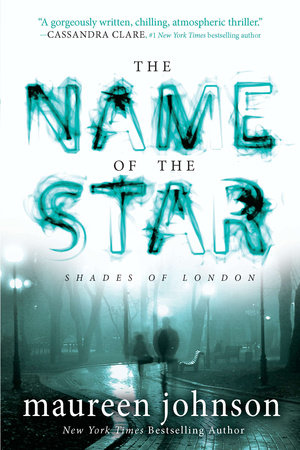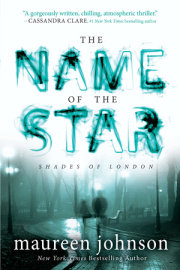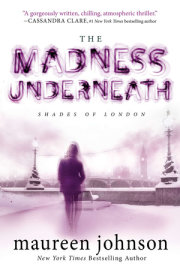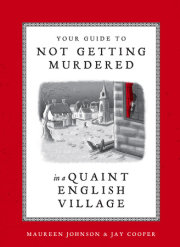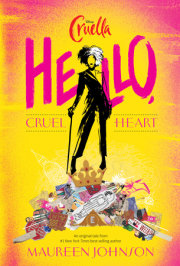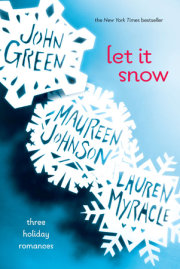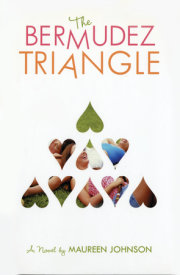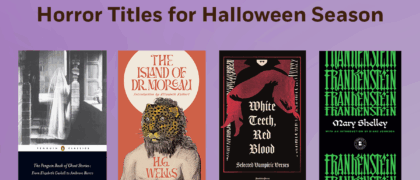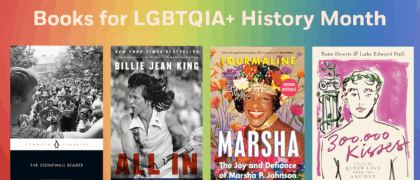If you live around New Orleans and they think a hurricane might be coming, all hell breaks loose. Not among the residents, really, but on the news. The news wants us to worry desperately about hurricanes. In my town, Bénouville, Louisiana (pronounced locally as Ben-ah-VEEL; population 1,700), hurricane preparations generally include buying more beer, and ice to keep that beer cold when the power goes out. We do have a neighbor with a two-man rowboat lashed on top of the porch roof, all ready to go if the water rises—but that’s Billy Mack, and he started his own religion in the garage, so he’s got a lot more going on than just an extreme concern for personal safety.
Anyway, Bénouville is an unstable place, built on a swamp. Everyone who lives there accepts that it was a terrible place to build a town, but since it’s there, we just go on living in it. Every fifty years or so, everything but the old hotel gets wrecked by a flood or a hurricane—and the same bunch of lunatics comes back and builds new stuff. Many generations of the Deveaux family have lived in beautiful downtown Bénouville, largely because there is no other part to live in. I love where I’m from, don’t get me wrong, but it’s the kind of town that makes you a little crazy if you
never leave, even for a little while.
My parents were the only ones in the family to leave to go to college and then law school. They became law professors at Tulane, in New Orleans. They had long since decided that it would be good for all three of us to spend a little time living outside of Louisiana. Four years ago, right before I started high school, they applied to do a year’s sabbatical teaching American law at the University of Bristol in England. We made an agreement that I could take part in the decision about where I would spend that sabbatical year—it would be my senior year. I said I wanted to go to school in London.
Bristol and London are really far apart, by English standards. Bristol is in the middle of the country and far to the west, and London is way down south. But really far apart in England is only a few hours on the train. And London is
London. So I had decided on a school called Wexford, located in the East End of London. The three of us were all going to fly over together and spend a few days in London, then I would go to school and my parents would go to Bristol, and I would travel back and forth every few weeks.
But then there was a hurricane warning, and everyone freaked out, and the airlines wiped the schedule. The hurricane teased everyone and rolled around the Gulf before turning into a rainstorm, but by that point our flight had been canceled and everything was a mess for a few days. Eventually, the airline managed to find one empty seat on a flight to New York, and another empty seat on a flight to London from there. Since I was scheduled to be at Wexford before my parents needed to be in Bristol, I got the seat and went by myself.
Which was fine, actually. It was a long trip—three hours to New York, two hours wandering the airport before taking a six-hour flight to London overnight—but I still liked it. I was awake all night on the flight watching English television and listening to all the English accents on the plane.
I made my way through the duty-free area right after customs, where they try to get you to buy a few last-minute gallons of perfume and crates of cigarettes. There was a man waiting for me just beyond the doors. He had completely white hair and wore a polo shirt with the name
Wexford stitched on the breast. A shock of white chest hair popped out at the collar, and as I approached him, I caught the distinctive, spicy smell of men’s cologne. Lots of cologne.
“Aurora?” he asked.
“Rory,” I corrected him. I never use the name Aurora. It was my great-grandmother’s name, and it was dropped on me as kind of a family obligation. Not even my parents use it.
“I’m Mr. Franks. I’ll be taking you to Wexford. Let me help you with those.”
I had two incredibly large suitcases, both of which were heavier than I was and were marked with big orange tags that said HEAVY. I needed to bring enough to live for nine months. Nine months in a place that had cold weather. So while I felt justified in bringing these extremely big and heavy bags, I didn’t want someone who looked like a grandfather pulling them, but he insisted.
“You picked quite the day to arrive, you did,” he said, grunting as he dragged the suitcases along. “Big news this morning. Some nutter’s gone and pulled a Jack the Ripper.”
I figured “pulled a Jack the Ripper” was one of those English expressions I’d need to learn. I’d been studying them online so I wouldn’t get confused when people started talking to me about “quid” and “Jammy Dodgers” and things like that. This one had not crossed my electronic path.
“Oh,” I said. “Sure.”
He led me through the crowds of people trying to get into the elevators that took us up to the parking lot. As we left the building and walked into the lot, I felt the first blast of cool breeze. The London air smelled surprisingly clean and fresh, maybe a little metallic. The sky was an even, high gray. For August, it was ridiculously cold, but all around me I saw people in shorts and T-shirts. I was shivering in my jeans and sweatshirt, and I cursed my flip-flops—which some stupid site told me were good to wear for security reasons. No one mentioned they make your feet freeze on the plane and in England, where they mean something different when they say “summer.”
We got to the school van, and Mr. Franks loaded the bags in. I tried to help, I really did, but he just said no, no, no. I was almost certain he was going to have a heart attack, but he survived.
“In you get,” he said. “Door’s open.”
I remembered to get in on the left side, which made me feel very clever for someone who hadn’t slept in twenty-four hours. Mr. Franks wheezed for a minute once he got into the driver’s seat. I cracked my window to release some of the cologne into the wild.
“It’s all over the news.” Wheeze, wheeze. “Happened up near the Royal Hospital, right off the Whitechapel Road. Jack the Ripper, of all things. Mind you, tourists love old Jack. Going to cause lots of excitement, this. Wexford’s in Jack the Ripper territory.”
He switched on the radio. The news station was on, and I listened as he drove us down the spiral exit ramp.
“. . . thirty-one-year-old Rachel Belanger, a commercial filmmaker with a studio on Whitechapel Road. Authorities say that she was killed in a manner emulating the first Jack the Ripper murder of 1888 . . .”
Well, at least that cleared up what “pulling a Jack the Ripper” meant.
“. . . body found on Durward Street, just after four this morning. In 1888, Durward Street was called Bucks Row. Last night’s victim was found in the same location and position as Mary Ann Nichols, the first Ripper victim, with very similar injuries. Chief Inspector Simon Cole of Scotland Yard gave a brief statement saying that while there were similarities between this murder and the murder of Mary Ann Nichols on August 31, 1888, it is premature to say that this is anything other than a coincidence. For more on this, we go to senior correspondent Lois Carlisle . . .”
Mr. Franks barely missed the walls as he wove the car down
the spiral.
“. . .
Jack the Ripper struck on four conventionally agreed upon dates in 1888: August 31, September 8, the ‘Double Event’ of September 30—so called because there were two murders in the space of under an hour—and November 9. No one knows what became of the Ripper or why he stopped on that date . . .”
“Nasty business,” Mr. Franks said as we reached the exit. “Wexford is right in Jack’s old hunting grounds. We’re just five minutes from the Whitechapel Road. The Jack the Ripper tours come past all the time. I imagine there’ll be twice as many now.”
We took a highway for a while, and then we were suddenly in a populated area—long rows of houses, Indian restaurants, fish-and-chip shops. Then the roads got narrower and more crowded and we had clearly entered the city without my noticing. We wound along the south side of the Thames, then crossed it, all of London stretched around us.
I had seen a picture of Wexford a hundred times or more. I knew the history. Back in the mid-1800s, the East End of London was very poor. Dickens, pickpockets, selling children for bread, that kind of thing. Wexford was built by a charity. They bought all the land around a small square and built an entire complex. They constructed a home for women, a home for men, and a small Gothic revival church—everything necessary to provide food, shelter, and spiritual guidance. All the buildings were attractive, and they put some stone benches and a few trees in the tiny square so there was a pleasant atmosphere. Then they filled the buildings with poor men, women, and children and made them all work fifteen hours a day in the factories and workhouses that they also built around the square.
Somewhere around 1920, someone realized this was all kind of horrible, and the buildings were sold off. Someone had the bright idea that these Gothic and Georgian buildings arranged around a square kind of looked like a school, and bought them. The workhouses became classroom buildings. The church eventually became the refectory. The buildings were all made of brownstone or brick at a time when space in the East End came cheap, so they were large, with big windows and peaks and chimneys silhouetted against the sky.
“This is your building here,” Mr. Franks said as the car bumped along a narrow cobblestone path. It was Hawthorne, the girls’ dorm. The word WOMEN was carved in bas-relief over the doorway. Standing right under this, as proof, was a woman. She was short, maybe just five feet tall, but broad. Her face was a deep, flushed red, and she had big hands, hands you’d imagine could make really big meatballs or squeeze the air out of tires. She had a bob haircut that was almost completely square, and was wearing a plaid dress made of hearty wool. Something about her suggested that her leisure activities included wrestling large woodland animals and banging bricks together.
As I got out of the van she called, “Au
rora!” in a penetrating voice that could cause a small bird to fall dead out of the sky.
“Call me Claudia,” she boomed. “I’m housemistress of Hawthorne. Welcome to Wexford.”
“Thanks,” I said, my ears still ringing. “But it’s Rory.”
“Rory. Of course. Everything all right, then? Good flight?”
“Great, thank you.” I hurried to the back of the van and tried to get to the bags before Mr. Franks broke his spine in three places hauling them out. Flip-flops and cobblestones do not go well together, however, especially after a rain, when every slight indentation is filled with cold water. My feet were soaked, and I was sliding and stumbling over the stones. Mr. Franks beat me to the back of the car, and grunted as he yanked the bags out.
“Mr. Franks will bring those inside,” Claudia said. “Take them to room twenty-seven, please, Franks.”
“Righto,” he wheezed.
The rain started to patter down lightly as Claudia opened the door, and I entered my new home for the first time.
Copyright © 2011 by Maureen Johnson. All rights reserved. No part of this excerpt may be reproduced or reprinted without permission in writing from the publisher.

